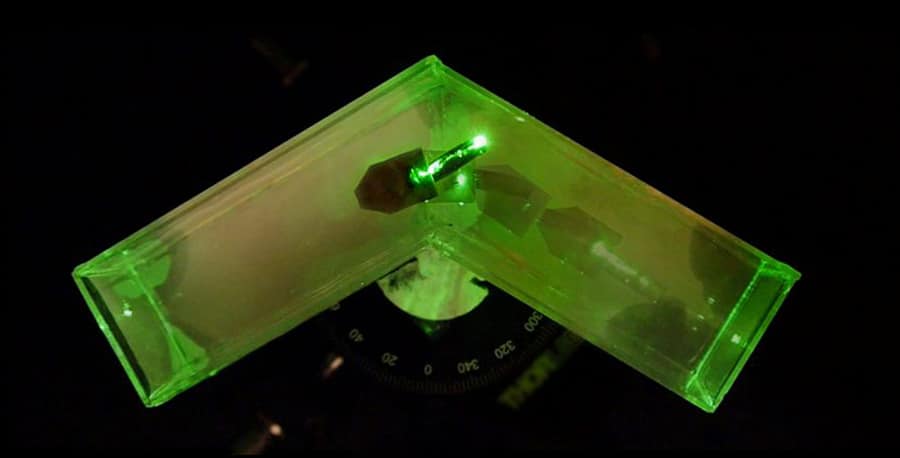A team of researchers has recently developed the soft-bodied swimming robot that operates under constant light input. The robot, named OsciBot, moves by oscillating its tail based on a self-sustained hydrogel oscillator.
The basis of this work is the phenomenon of phototaxis – the movement towards or away from a light source that propagates in the animal world. There are some creatures in nature, like jellyfish or moths that are attracted to everything glowing.
The OsciBot is directly powered by a constant light source and is battery independent or no need to be tethered to another power source. It is made of soft hydrogel, which when placed in water, it swells and is responsive to light.
In the course of the research, scientists have solved the main dilemma of recent years: they have created a fundamentally new intelligent machine that will not be dependent on batteries and any source of energy.

During the hydrogel experiment, a flexible cylinder of 2 cm length was constructed, which was fixed at the bottom of the water tank. When a beam of light was directed to the cylinder, it actually moved about 66 times per minute. The team also found that by moving the light source, the cylinder actually bent left, right, up or down, in response.
It turned out that the speed of oscillation of the material is regulated depending on the length and thickness of the cylinder, as well as the amount of light it enters.
This is how the OsciBot robot was created, which has a long tail and a body in the shape of a surfboard. When light from a laser hits a specific area of the tail, it warms up and then moves towards the light source. After it moved up, the tail creates a shadow that cools the section where the laser originally made contact with the robot, which causes the tail to descend again. The process can be repeated to create a flapping motion.
The team found that they could make the tail flap about 35 times a minute and could move the robot about 1.15 times its body length per minute.
The researchers emphasize that the generation of oscillations depends on the short supply of energy; these include pulsed light or alternating current. This method of oscillation generation is much cheaper to install batteries; in addition, it does not require any technical costs and, most importantly, is environmentally friendly.
UCLA Specialist in Materials Science and Engineering, Yusen Zhao, said that the navigation process at OsciBot is a fundamental demonstration of how direct and constant light influences motion and determines its direction.
The scientist stressed that the world is on the verge of creating robotic structures without heavy batteries and power cables. On a larger scale, the idea can be used to design giant ship propellers or boats that use sunlight to maneuver. Besides, the design can be adapted to use other types of energy – acoustic waves, electronic and magnetic signals.
